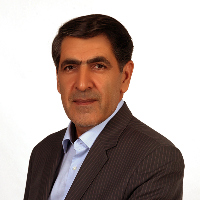Population and Sustainable Development in Iran
Author(s):
Abstract:
introduction population growth and sustainable development has significant relationship. The population event and its consequences led the researches of social fields، and environmentalists to react in various ways. The population restrictionist، stationarist and optimulist، have approached the question differently. The present article’ emphasis is on the well proportioned population approach. The idea is that a well proportioned population renders a balance among population، resources and the processes of development، which not only affords for the material and spiritual needs of the members of society. but also guarantees the welfare and happiness of the future generations through optimum exploitation of environment and stable development process. Litlerarure review In some regions with relative or absolute overpopulation، the natural resources have to be used up for consumer expenditures of the increasing population instead of basic and infrastructural investment. In the recent five decades، Iran’s population with an average growth rate of 2. 45% has been multiplied 3. 7 times. Population growth diverts the areas of investment from job creation، production and economic growth and finally the economic development، to consumer expenditures. The expenses of educational، hygienic، and other services، and the most important - the payment of 90 billion dollars subsidies- is an example of this. Moreover، unemployment، poverty، educational and hygienic problems، the destruction and pollution of environment، and decrease in water resources per person are the consequences of population growth in Iran. conclusion Therefore، it is proposed to regard the policy of controlling the population growth to 0. 5% increase at the top of the agenda. Fortunately، the comments of the Shiite and the Sunni religious authorities on the legitimacy of birth control prove that this policy is not contradictory to the religious beliefs، as the quality of population is preferred to its quantity.
Keywords:
Language:
Persian
Published:
Social Welfare Quarterly, Volume:11 Issue: 42, 2011
Pages:
7 to 36
https://magiran.com/p1006634
مقالات دیگری از این نویسنده (گان)
-
Pathology of Electoral Districting in Iran and Providing an Optimal Model; Case Study: the Islamic Consultative Assembly
Mehdi Heidarian, Zahra Ahmadypoor *, Ebrahim Roumina,
Geopolitics, -
Geopolitical Explanation of the Foreign Policy Strategy of the Islamic Republic of Iran in the Subcontinent (India and Pakistan)
Saied Mostafa Hosaini *, Yadollah Karimipour, Afshin Mottaghi, Javad T Etaat
Journal ofof Regional Planning,


